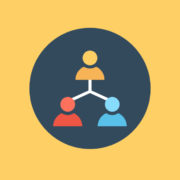Supporting Employees with Seasonal Affective Disorder
As summer ends and evolves into fall then winter, daylight hours dissipate and darkness becomes plentiful during the day. Many employees leave for work in the dark and arrive home when it is nearly or fully dark. For some people, this reduction in natural light from the change in seasons can trigger a health condition called Seasonal Affective Disorder (SAD), also known as seasonal depression. Serotonin, a hormone that is key to regulating one’s moods and body functions, tends to drop in the fall and winter months while Melatonin, the hormone responsible for sleep, tends to increase with darkness. These hormonal shifts can change the way a person feels and functions. Sunlight is a natural resource for the body’s creation of Vitamin D; when sunlight is reduced, Vitamin D is reduced. When a person’s Vitamin D level is below the norm, it can result in the person feeling overly tired, irritable and sluggish. These changes in body chemistry can affect individuals physically and mentally. As with physical health, mental health is crucial to employees’ performance and productivity. Changes in an employee’s productivity, triggered by Seasonal Affective Disorder, should not yield reprimands and penalties for a bona fide health condition. In order not to lose valuable talent, companies must learn and implement ways to effectively support employees with Seasonal Affective Disorder.
Seasonal Affective Disorder
According to the American Psychiatric Association, Seasonal Affective Disorder affects approximately 5% of adults in the United States and typically lasts approximately 40% of the year. People who live further away from the equator are more likely to be affected with SAD. Women are four times more likely to be affected by SAD, and individuals who suffer from other diagnosed mental health conditions have a higher likelihood of SAD occurring. People with SAD can display a variety of characteristics such as irritability, lack of energy, difficulty concentrating, weight gain or loss, lack of motivation, trouble handling stress, inability to meet deadlines, and oversleeping. These factors can lead to decreased productivity and increases in tardiness and absenteeism.
Severity of Season Affective Disorder
SAD is classified as a medical condition as “major depressive disorder with seasonal pattern” in the Diagnostic and Statistical Manual of Mental Disorders (DSM-5-TR). The intensity of Seasonal Affective Disorder varies among those who have the condition. Not all employees will need multiple supports to combat SAD effects at work.
Communication between leadership and the employee is crucial. This way you can determine what accommodations will positively impact the employee’s performance and meet legal guidelines in relation to the effects of SAD on the employee. The first and most important step is to establish a work environment supportive of mental health all year round. Listen and understand the employee’s needs. Explore accommodations that can support those suffering with SAD such as the following:
- Host info sessions led by wellness practitioners so employees can acquire a better understanding of SAD and how to support those affected by it. Conduct training sessions focused on stress and time management. Knowing how to manage one’s stress and time are key to success not just in darker months but throughout the year.
- Provide adequate indoor lighting to ensure beneficial brightness. While energy efficiency is encouraged, LED lighting can provide essential brightness to boost employee productivity while being cost effective. Explore the use of light lamps / light boxes in work areas to offset the reduction in light.
- Encourage the use of the company’s Employee Assistance Program (EAP). If your company does not provide an EAP, encourage the use of mental health resources within the company’s benefit plan. If there are no formal mental health supports included within the company’s benefits, start working to include mental health benefits to employees and their dependents. Communicate information on benefits, local mental health resources and 988 Suicide and Crisis Line in your company’s onboarding platform and intranet.
- Take 15 minutes for a walk outside as a group or individually. Taking additional frequent breaks and/or taking a longer lunch to get outside more might seem counterproductive, but research shows that those additional outdoor breaks result in increased employee productivity.
- Rally the employees to get together for an activity. Motivate employees to use the onsite fitness center, if available. If there is not an onsite fitness area, provide incentives for employees to use a private workout facility or home equipment. Create a team for competitive and non-competitive sports. Pickleball, volleyball, basketball, running, yoga, etc…there are a variety of activities to explore for all skill levels.
- For those with physical limitations or for those who prefer an alternative to team sports, connect with other employees on topics of interest. Get together with coworkers for a book club, trivia, card or word game events to challenge oneself cognitively while socializing. Having an evening or lunch event can connect onsite and remote employees together.
- Suggest the use of PTO during darker, colder seasons so employees can travel to warmer, light-plentiful regions.
Logistics
Logistics play a powerful role for those affected with Seasonal Affective Disorder. Examine the workspace layout carefully. What can be changed to provide employees with extra natural light? Stand up, floating desks allow mobility to move to work in more lighted areas during the day. Working outside is a viable option for some people. Companies should keep flexible work arrangements in the forefront. Working remotely in sunny areas or at home can help. If the employee can effectively complete tasks at alternative hours in the morning and evening, consider flexing their work time so they can have additional non-work time during sunlight hours. For more ideas to accommodate employees with SAD, visit the Job Assistance Network (JAN) which is coordinated by the US Office of Disability Employment Policy (ODEP).
Preventing Seasonal Affective Disorder
Since SAD tends to be a recurring condition, prevention strategies can reduce the symptoms. Before the days become predominantly darker, encourage individuals to start exercising more, capture more natural light as long as possible, and use light therapy at home earlier. Listening with compassion and understanding is the first thing that HR and managers should do to help employees struggling with Season Affective Disorder. By listening, not hearing but listening, to an employee’s concerns and challenges, leadership and the employee can craft viable solutions. Strategies to help those with SAD offer opportunities for team cohesiveness. HR and managers are tasked with setting expectations for teams within the organization. When leadership supports employees affected by SAD, they display a commitment to the success of the team as a whole.







